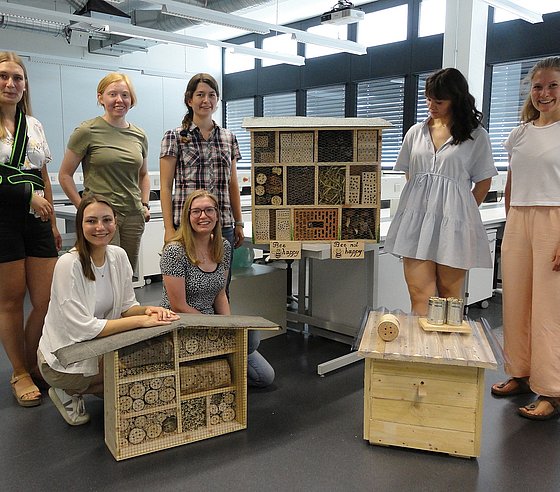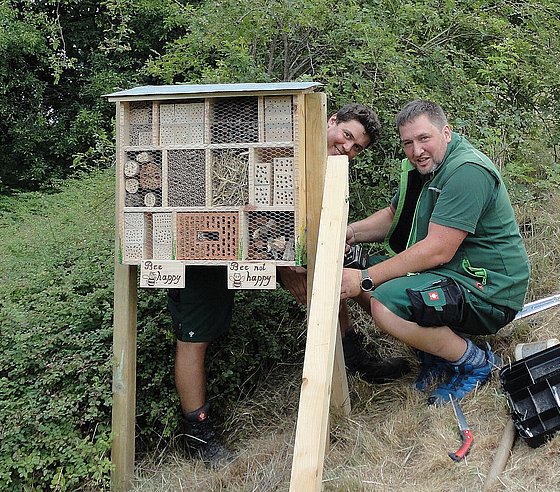


Nesting aids for wild bees
Around 90% of flowering plants depend on insect pollination, so insects play a crucial role in this process. As well as honey bees, which are kept as farm animals and whose hives can sometimes be seen in the countryside, wild bees pollinate numerous flowering plants while searching for nectar and pollen. However, the term 'wild bee' does not refer to a specific group of bees, but rather to those species in the superfamily Apoidea that are important from a nature conservation perspective. This includes bumblebees.
The general decline in insect species also affects wild bees, whose numbers and species are steadily decreasing in Germany due to a lack of available habitat and food sources. Around half of Germany's wild bee species are considered endangered, and all species are protected under the Federal Species Protection Ordinance.
Where do wild bees nest?
While most wild bees live solitary lives, caring for their brood without the help of other bees, bumblebees are predominantly colony-forming insects, like honeybees. There are around 500 species of wild bee in Germany. The majority of these species nest underground in holes dug into the ground. Around 25% of wild bee species nest above ground, using hollow plant stems or other structures, such as sand and clay walls. Finally, there are cuckoo bees, which lay their eggs in the brood cells of other wild bees.
Nesting aids - what to look out for?
Nesting aids can support above-ground nesting species. These are also available to buy as 'insect hotels' from DIY or garden centres. However, many of these aids are not effective, as not all materials and cavities are suitable for nesting. Spruce cones and holes with a diameter that is too large, for example, are avoided. Holes that are frayed, cracked or made of soft wood that absorbs water and encourages bacterial infestation are also unsuitable.
Ideal nesting sites are smoothly cut plant stems of various lengths and diameters (3–8 mm) or cleanly drilled holes in hardwoods that are not too large. Several small, differently designed nesting aids are better than one large one. Nesting aids should be placed in sunny spots close to food plants and water sources.
Nesting aids at the university of Wuppertal
In a course organised by our botany working group on the subject of 'Flowers and Pollinators', students built various nesting aids. With the kind support of Mr Schürhoff (5 December) and employees of the Mechler landscape gardening company, these were set up on the Grifflenberg campus. 'Better' and 'worse' nesting aids were designed deliberately in order to investigate how successful the colonisation would be over the next few years.
